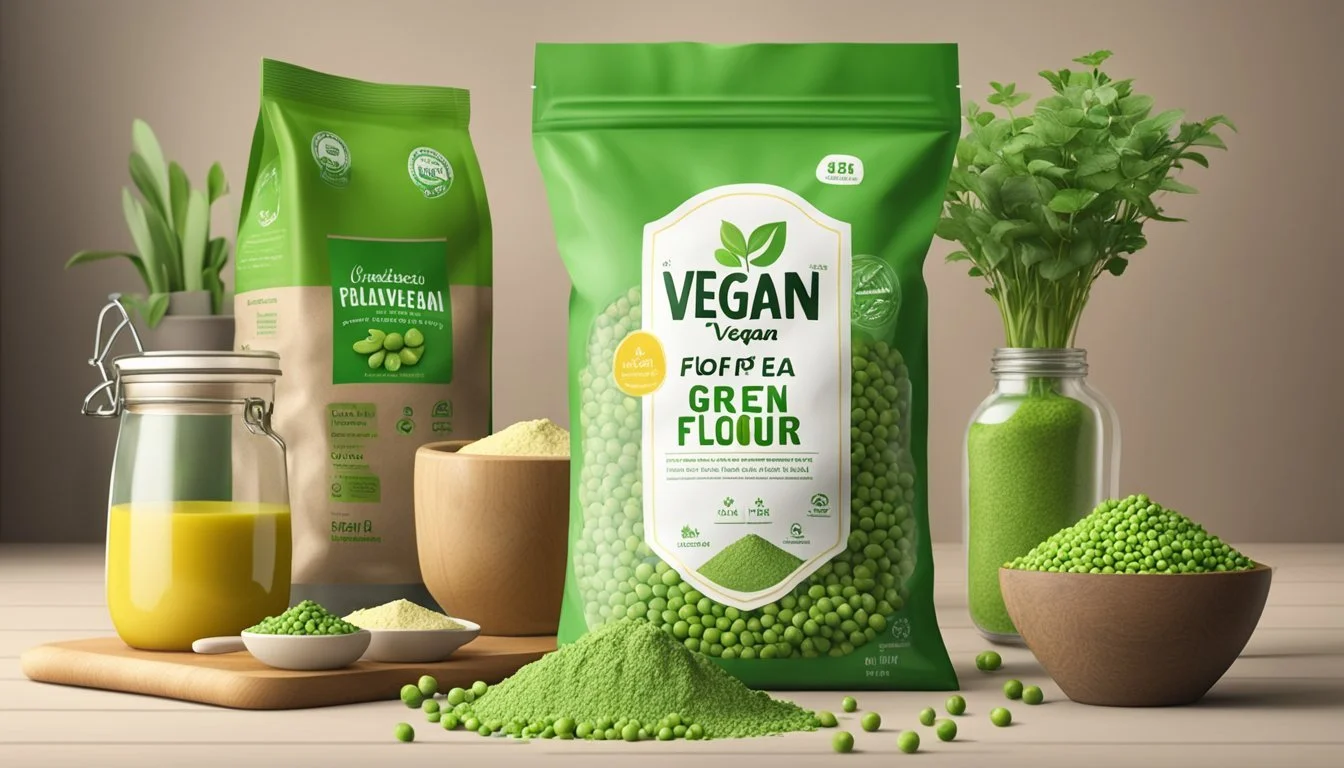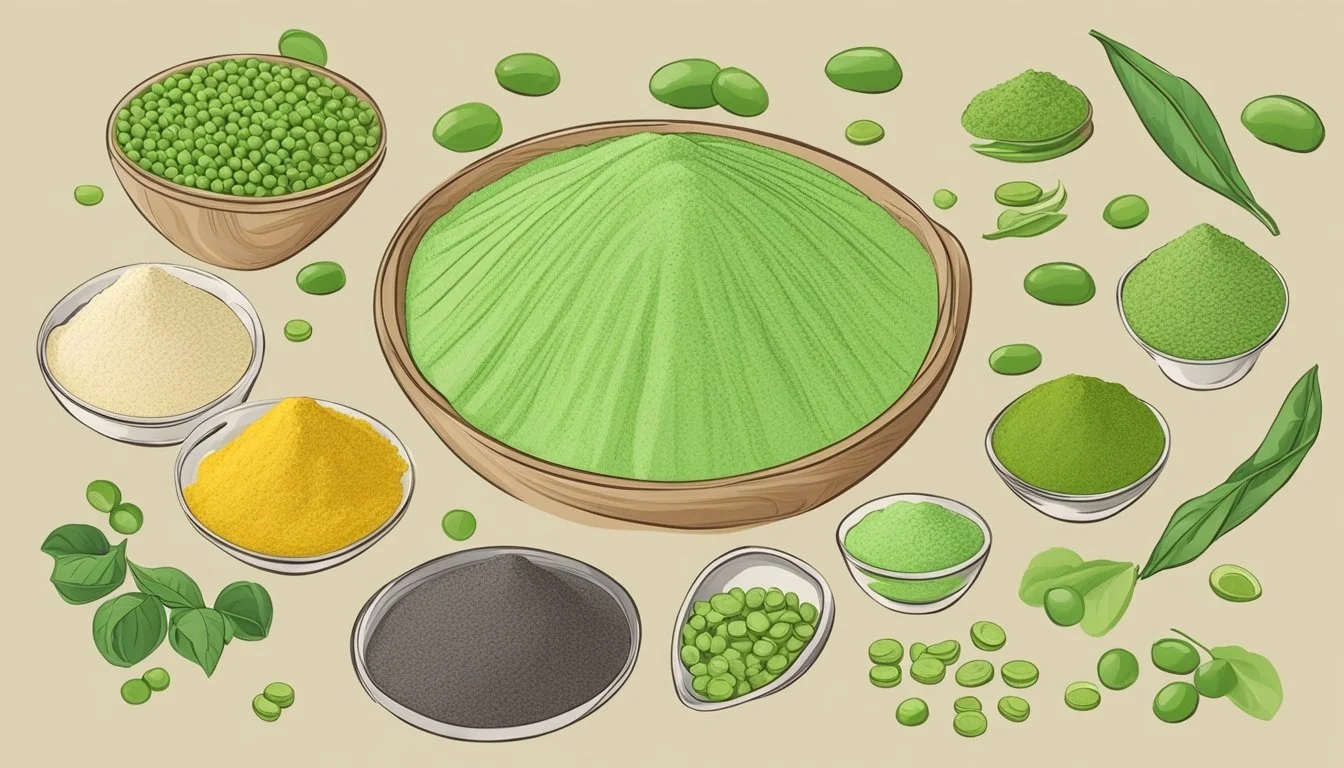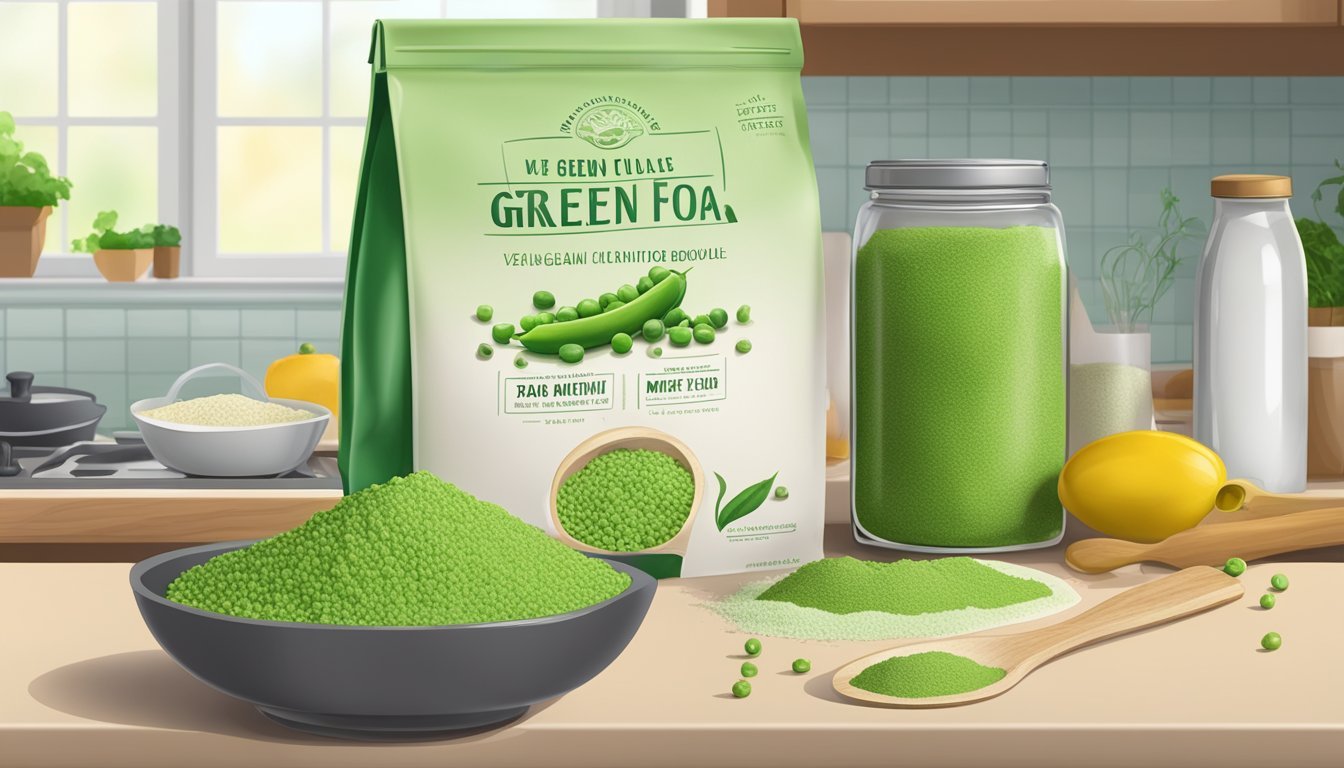Is Green Pea Flour Vegan?
Unveiling its Dietary Status
Green pea flour emerges as a noteworthy inclusion in the modern pantry, particularly among those who follow a plant-based diet. Derived entirely from dried green peas, this flour is vegan, offering a suitable and nutritious alternative to traditional grain flours for vegans and those with gluten intolerances. High in protein and fiber, green pea flour provides essential nutrients that are crucial for daily dietary needs, while also aligning with the ethical and dietary guidelines of veganism.
The production process of green pea flour is simple yet does not compromise its compatibility with vegan diets. Green peas are dried, ground into a fine powder, and then sifted to obtain a consistent texture. This process avoids the use of any animal products or by-products, ensuring that the flour remains purely plant-based. Its nutritional profile is an added benefit, as it contains significant amounts of iron, magnesium, and potassium, all of which contribute to maintaining good health.
As a versatile ingredient, green pea flour can seamlessly integrate into a variety of vegan recipes. Its subtle flavor and binding properties make it an appealing choice for vegans seeking to enhance their culinary creations. By offering a gluten-free option that does not stray from vegan principles, green pea flour stands as an exemplary ingredient within the vegan community and reinforces the movement towards diverse and inclusive dietary options.
Analyzing Green Pea Flour
Green pea flour is a plant-based ingredient that caters to a variety of dietary preferences while providing notable nutritional advantages. Its compatibility with vegan diets makes it an attractive alternative for individuals seeking plant-derived protein sources.
What Is Green Pea Flour
Green pea flour is produced from finely ground green peas. It is gluten-free and serves as a versatile ingredient in cooking and baking. Notably used as a flour alternative, it is a dense source of nutrients and is particularly appealing to those following gluten-free or vegan diets due to its plant-based origin.
Nutritional Profile
The nutritional benefits of green pea flour include high levels of protein and dietary fiber, essential for muscle repair and gut health, respectively. It typically contains a robust assortment of vitamins, minerals, and antioxidants, contributing to overall health. Its nutritional profile is advantageous for managing cholesterol levels, given the flour's minimal saturated fat content.
Calories: Comparatively low in calories, offering a nutritious addition to meals without excessive energy intake.
Protein: Rich in plant-based pea protein, comparable to specialized products like pea protein powder and pea protein isolate.
Fiber: Abundant in dietary fiber, aiding in digestive health and satiety.
Vitamins and Minerals: A source of essential nutrients, including B vitamins, iron, potassium, and magnesium.
Vegan Considerations
Green pea flour is inherently vegan, as it is derived solely from green peas and does not contain any animal products or byproducts. This feature makes it suitable for vegan baking and cooking, where it may replace flours that are processed with animal products or paired with non-vegan ingredients. It also provides a basis for creating dairy-free options like plant milk or vegan baked goods, thus fitting seamlessly into a vegan lifestyle.
Green Pea Flour in Cooking
Green pea flour offers a versatile base in cooking for vegans and those with gluten intolerance. As a protein-rich and fiber-packed ingredient, it serves as a beneficial and adaptable addition to the vegan pantry.
Culinary Uses
Green pea flour is a gluten-free alternative to traditional flours and finds its use in both savory and sweet preparations. The flour's ability to blend well with other ingredients makes it a sought-after inclusion in vegan recipes. It can function as a thickening agent in soups, stews, and sauces, or serve as the foundation for baked goods such as breads, cakes, and cookies.
Breakfast: Incorporate pea flour in pancakes or waffles, often mixed with starch for added fluffiness.
Appetizers and Snacks: Utilize the flour for crackers, small breads, or as a binding agent in vegan patties.
Main Meals: Create substantial dishes like vegan pasta, using pea flour to add protein and texture.
Desserts: Prepare cakes and other sweet treats that are health-conscious and satisfying.
Smoothies: For a protein boost, pea flour can be blended into smoothies.
Vegan Recipes
Pea flour shines in vegan recipes, offering a substantial high-protein and fiber-rich component. For instance, a vegan pea flour pancake mix might include green pea flour blended with rice flour and amaranth flour for a balanced starch profile. Using a high-powered blender or grain mill, one can produce a fine powder from dried peas which is then sieved to ensure a smooth consistency.
Prep Time: It varies depending on the complexity of the recipe, from quick batters to longer dough-resting times.
Cook Time: This can range from a few minutes for pancakes to hours for baked goods.
Total Time: The sum of prep and cook time, often listed in recipes to assist with meal planning.
For those exploring gluten-free alternatives, green pea flour adds diversity to their culinary toolkit, whether they're crafting a simple snack or an elaborate meal. It continues to be used in a variety of recipes from hearty soups to delicate desserts, exemplifying its broad applicability in vegan cooking.
Ingredient Alternatives and Comparisons
In the realm of baking and cooking, green pea flour distinguishes itself as a gluten-free and protein-rich alternative to traditional flours.
Versus Other Flours
Green pea flour and wheat flour starkly contrast in their composition and health implications. Green pea flour stands out due to its high protein and dietary fiber content, making it a robust option for those seeking nutritious alternatives. Unlike wheat flour that comes from milled wheat grains, green pea flour is made by grinding dried green peas into a fine powder, eliminating any gluten presence, thus being a perfect gluten-free solution.
Comparatively, wheat flour is ubiquitously used and is a cost-effective grain mill product, but it contains gluten, making it unsuitable for those with celiac disease or gluten sensitivities. Other popular flours like rice flour and chickpea flour also offer gluten-free options with the latter being similar to green pea flour in terms of protein content. Here's a brief comparison:
Flour Type Gluten-Free Protein-rich Dietary Fiber Green Pea Flour Yes High High Wheat Flour No Moderate Low Chickpea Flour Yes High Moderate Rice Flour Yes Low Low
Allergy-Friendly and Dietary Benefits
Green pea flour serves those with dietary restrictions well, not only as a gluten-free option but also for its minimal allergenic properties. It's a great choice for people with gluten intolerance or wheat allergies. It's particularly noted for its high levels of dietary fiber, which can enhance digestion and satiety.
Moreover, for individuals seeking fiber and proteins in their diet without the gluten, green pea flour provides a significant amount of these nutrients. This makes it not just a safe alternative, but a beneficial one in comparison to wheat flour, which has lower dietary fiber content and may trigger allergic reactions due to its gluten content.
Practical Tips and Techniques
When working with green pea flour in vegan recipes, one should consider both its storage for long-term freshness and particular tactics to enhance its application in cooking and baking.
Storage and Shelf Life
Green pea flour must be handled with care to maintain its quality. To best preserve its freshness, the flour should be stored in an airtight container and placed in a cool, dry area. If possible, refrigerating green pea flour can extend its shelf life, which generally spans between 4 to 6 months. However, one should always check for any off smells or signs of moisture, which can indicate spoilage.
Tips for Cooking and Baking
In the kitchen, success with green pea flour hinges on proper technique:
Prep Time: Prior to using the flour, sift it to ensure it is free of any clumps that could affect the texture of your dish.
Baking: For optimal results in vegan baking, combine green pea flour with ingredients like baking powder, which will help to achieve the desirable rise without the use of eggs. Start by preheating the oven to the required temperature, which is typically around 350°F for 15-20 minutes until the product is golden brown.
Cook Time & Total Time: Green pea flour often requires less time to cook than traditional flours due to its fineness. It's pivotal to adjust the time accordingly to prevent overbaking. Total time spent will vary depending on the recipe.
Moisture Control: To prevent a dry outcome, incorporate sufficient liquids such as water, olive oil, or coconut oil, which add moisture and richness to the recipe. The correct amount will be dictated by the specific recipe.
Flavor Enhancements: For a savory twist, add a pinch of salt or infuse herbs like rosemary into your green pea flour recipes for a subtle depth of flavor. Sweet recipes may benefit from a hint of sugar to balance the natural pea flavor.
Creative Ways to Use Green Pea Flour
Green pea flour is a dynamic ingredient that can transform both savory and sweet dishes. With its high protein and fiber content, this gluten-free flour is ideal for various recipes, beyond traditional baking.
Beyond Baking
Green pea flour can be a nutritious addition to your kitchen pantry, particularly for those with dietary restrictions or those simply seeking to incorporate more plant-based ingredients into their diet. Here are some innovative ways that it can be used:
Pancakes & Waffles: Replace traditional flour with green pea flour to create fluffy, nutrient-rich pancakes or waffles. Add a blend of garden peas, finely chopped onion, and garlic for a savory twist, or incorporate bananas and a touch of maple syrup for a sweet version.
Smoothies: For an added protein boost, a tablespoon or two of green pea flour can be blended into smoothies without significantly altering the taste, providing a subtle nuttiness.
Snack Bars: Combine with oats, nuts, and your choice of sweeteners to make homemade protein-packed snack bars.
Innovative Pairings and Flavors
When it comes to pairing and flavor profiling, green pea flour offers a versatile base that complements a wide array of ingredients:
Savory Combinations:
Tomato and basil, creating a Mediterranean-flavored base for flatbreads.
Green pea flour can also be combined with spices like cumin and coriander for an Indian-inspired taste, perfect for making savory pancakes or pakoras.
Sweet Mix-Ins:
Cinnamon and nutmeg, to impart warmth to cookies or muffins made with green pea flour.
Pair it with vanilla and citrus zest for a refreshing and zesty flavor in cakes or crepes.





